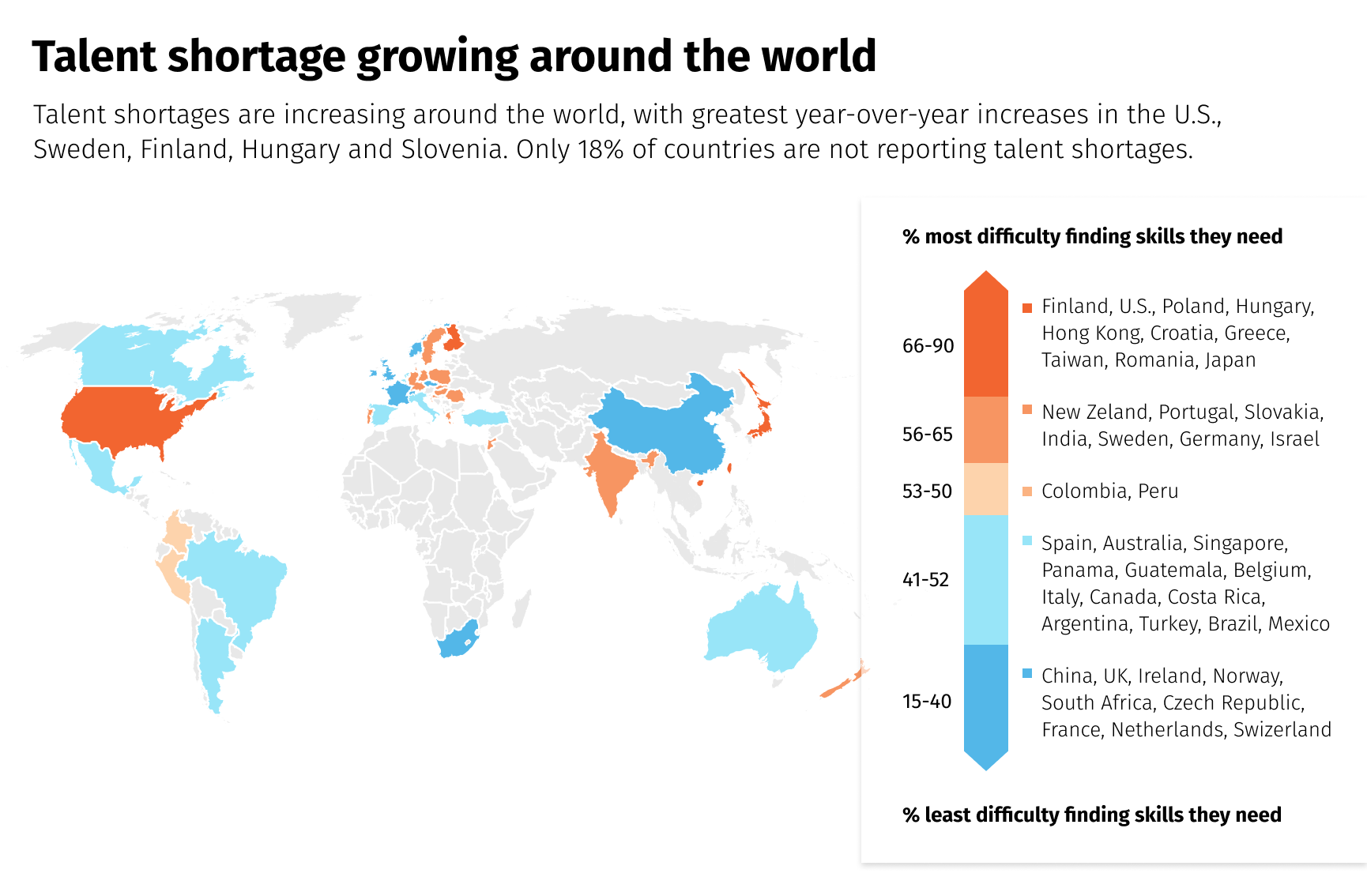Building a Competent Workforce for Tomorrow
Navigating Skill Gaps

In today's dynamic and ever-evolving business landscape, the ability to identify and bridge skill gaps has become a crucial factor in maintaining competitiveness and driving innovation. High-demand industries, in particular, face the challenge of staying ahead amidst rapid technological advancements and shifting market demands. Addressing skill gaps isn't just about filling immediate job vacancies; it's about future-proofing your organization and nurturing a workforce equipped with the skills necessary to thrive in the long term.
Importance of Skill Gap Identification
Skill gap identification is the strategic compass for businesses in today's fast-paced environment. Like a diagnostic check-up for your organization's engine, it pinpoints weaknesses before they hinder productivity or innovation. This insight enables targeted resource allocation, ensuring investments in talent development hit the mark. Additionally, it fosters a culture of continuous improvement, boosting agility and resilience. By recruiting talent with the right skills, businesses position themselves as industry leaders, ready to seize opportunities and drive growth in an ever-evolving landscape. Skill gap identification isn't just about plugging holes—it's the foundation for sustained success.
Skill Gap Importance Statistics
- According to Hiring Monster, “The top hurdle that hiring managers expect to face in 2021 remains the skills gap and its impact on finding qualified candidates—with 40 percent of respondents naming it as an anticipated challenge. Remarkably, a third of U.S. employers say the skills gap has increased compared to last year, and 80 percent of employers say they have difficulty filling openings due to skills gaps as opposed to a year ago.”
- According to a LinkedIn study, “64% of L&D professionals said that reskilling the current workforce to fill skills gaps is a priority now”

It is clear that the job market has a lack of a talent pool. The skill gap causes for a lack of transitioning jobs to the next generation so it is pertinent bridge the skill gap in the job market.
Strategies for Bridging Skill Gaps
- Upskilling and Reskilling Initiatives: Implement structured training programs to equip employees with new or enhanced skills relevant to their current or future roles. Offer courses, workshops, and certifications tailored to industry demands, ensuring employees stay abreast of emerging trends and technologies.
- Talent Development Programs: Establish comprehensive talent development frameworks that encompass mentorship, coaching, and career advancement opportunities. Encourage employees to take ownership of their professional growth through personalized development plans and performance feedback.
- Partnerships with Educational Institutions: Forge strategic partnerships with universities, vocational schools, and online learning platforms to access specialized training resources. Collaborate on curriculum development to ensure alignment with industry needs and facilitate seamless transitions from education to employment.
- Cross-Functional Training: Promote cross-functional collaboration by providing opportunities for employees to gain exposure to different departments or roles within the organization. Cross-training initiatives not only broaden employees' skill sets but also foster a deeper understanding of the business ecosystem.
- Knowledge Sharing Platforms: Establish internal knowledge sharing platforms, such as online forums or peer-to-peer mentoring programs, to facilitate the exchange of expertise and best practices. Encourage employees to share insights, lessons learned, and innovative solutions, fostering a culture of collaboration and continuous learning.
Harnessing Technology and Data Analytics
In today's dynamic digital landscape, technology and data analytics are indispensable allies in bridging skill gaps within organizations. By leveraging sophisticated data analytics tools, businesses can conduct precise skills assessments, uncover emerging trends, and forecast future talent needs with unprecedented accuracy. This data-driven approach empowers informed decision-making, enabling businesses to strategically prioritize training efforts and allocate resources efficiently to address critical skill gaps.
Moreover, by harnessing technology and data analytics, organizations can proactively anticipate future talent requirements and mitigate potential bottlenecks before they arise. Armed with actionable insights, businesses can tailor their interventions, whether through targeted training initiatives or cross-functional collaboration, to ensure that their workforce remains agile, adaptable, and well-equipped to drive success in an ever-evolving marketplace.
Cultivating a Culture of Continuous Learning
Creating a culture of continuous learning is essential for attracting and retaining top talent. Employees are more likely to commit to organizations that prioritize their professional development and offer opportunities for growth. Encouraging knowledge sharing, providing access to learning resources, and recognizing employee achievements are effective ways to foster a culture of continuous learning within your organization.
In conclusion, addressing skill gaps isn't just a reactive measure—it's a strategic imperative for businesses aiming to stay ahead in high-demand industries. By proactively identifying skill needs, implementing targeted training initiatives, and fostering a culture of continuous learning, organizations can build a competent workforce capable of driving innovation and sustaining competitive advantage in an ever-changing market landscape.







